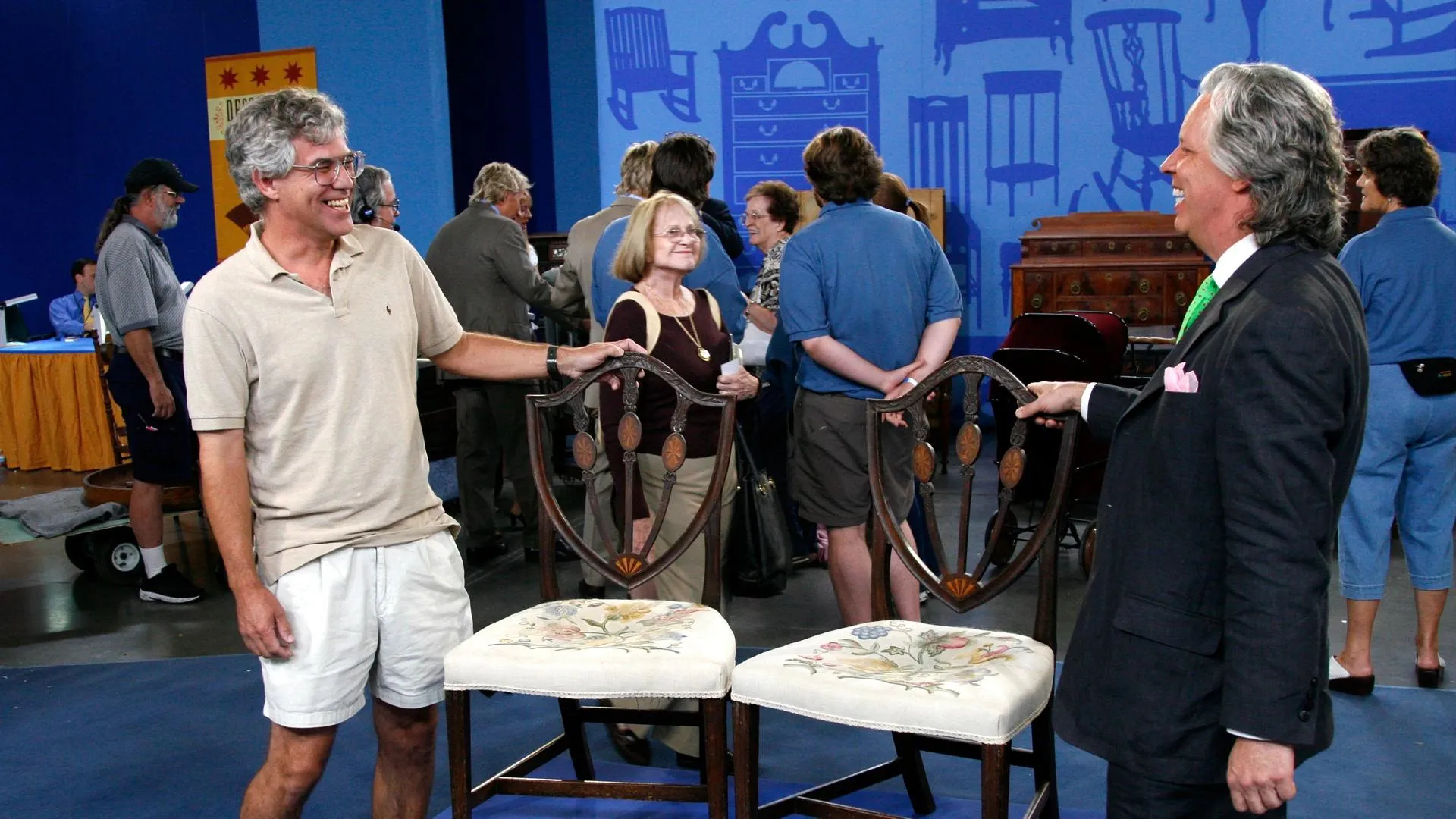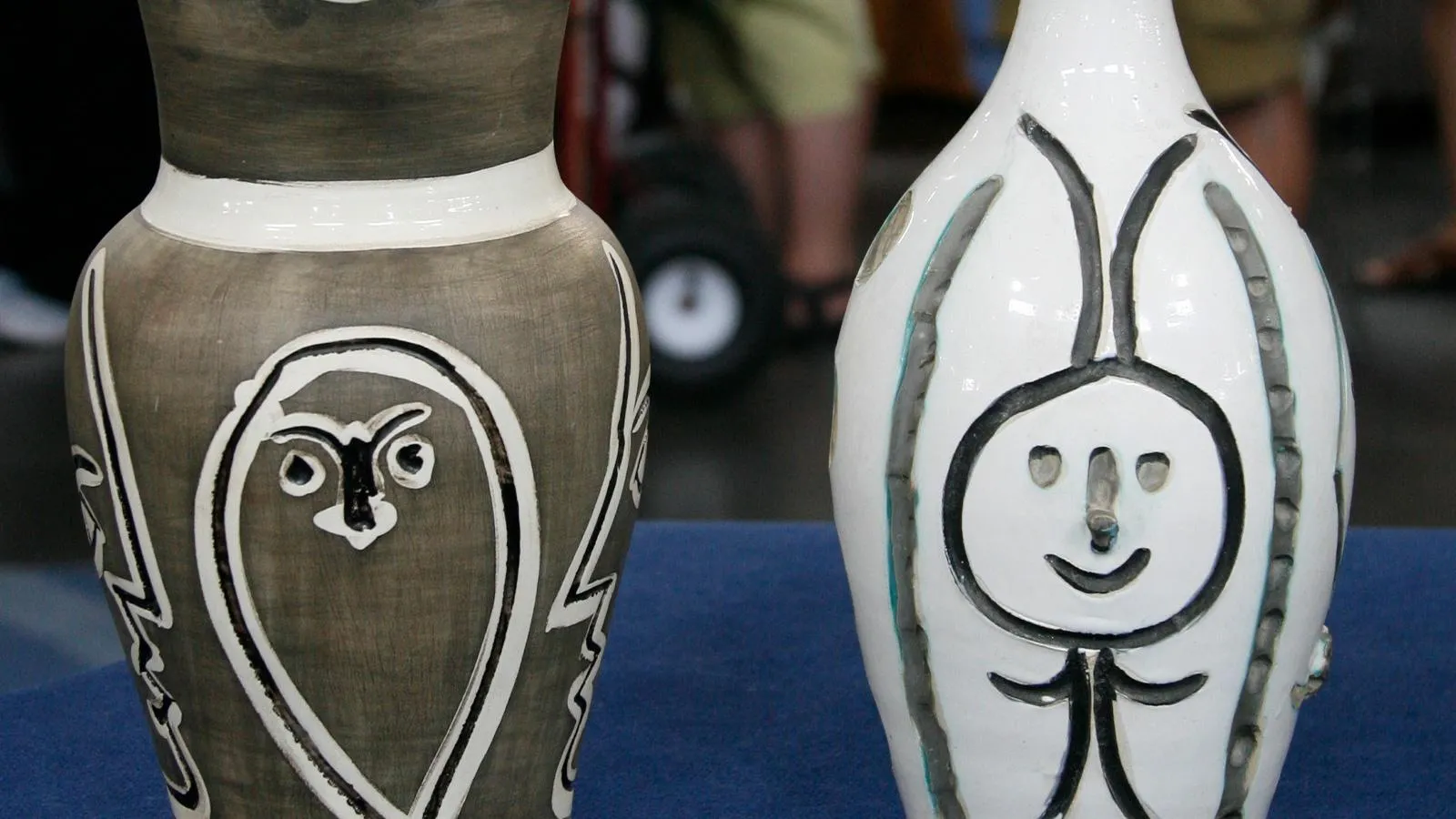APPRAISER: Has this blanket been in your family for long?
GUEST: Uh, yes, it has been. At least 50 years. It came from a great-uncle who traveled to Arizona and he purchased it. I knew it was a Navajo, but I didn't know whether it was a rug or a blanket.
APPRAISER: Okay, well, it is a Navajo blanket, and it's called a third-phase chief's blanket. And it's actually a variant of a third-phase chief's blanket, because of the crosses. With Navajo blankets, a first-phase blanket would just have the horizontal stripes going all the way across. A second-phase would put a block in through the stripes at the corners and through the center, and then third-phase blankets would start to close off the way this cross closes off up here. It was probably woven in the 1870s. And what makes it particularly beautiful is the different reds in it. There's many variations in the dyes. It's probably a raveled wool. The darker reds here were probably dyed with a cochineal. And then there's some lighter reds that are possibly commercial dyes. The beautiful blues are an indigo dye. And then your white and brown are natural homespun. Have you ever had anybody look at it or give you an appraisal of it?
GUEST: Yes, I had a local appraiser take a look at it.
APPRAISER: Did they tell you how much it was worth?
GUEST: She said about $2,500.
APPRAISER: Okay, well, she was a little off the mark. It's an unusual weaving in that it is a variant pattern, and it's so bold. I think at auction, would bring probably $35,000 to $45,000.
GUEST: Oh, my goodness.












